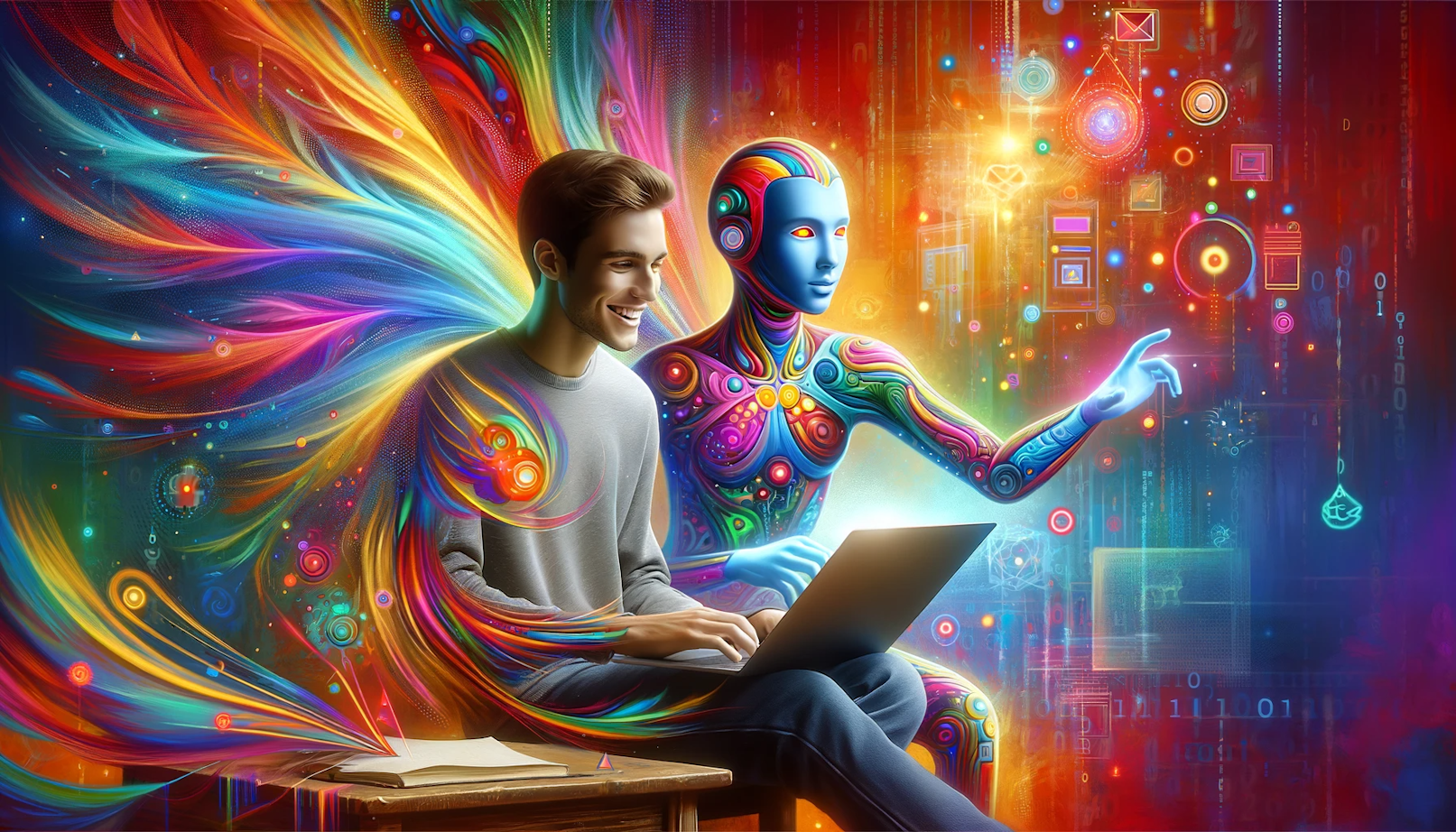In the vast expanse of the digital universe, a new star has risen, revolutionizing the way we approach coding: ChatGPT. Picture a world where the intricate language of programming is seamlessly intertwined with the intuitive intelligence of artificial intelligence. ChatGPT, a creation of OpenAI, is not just a tool; it's a companion for coders, transforming the complex labyrinth of code into a navigable path.
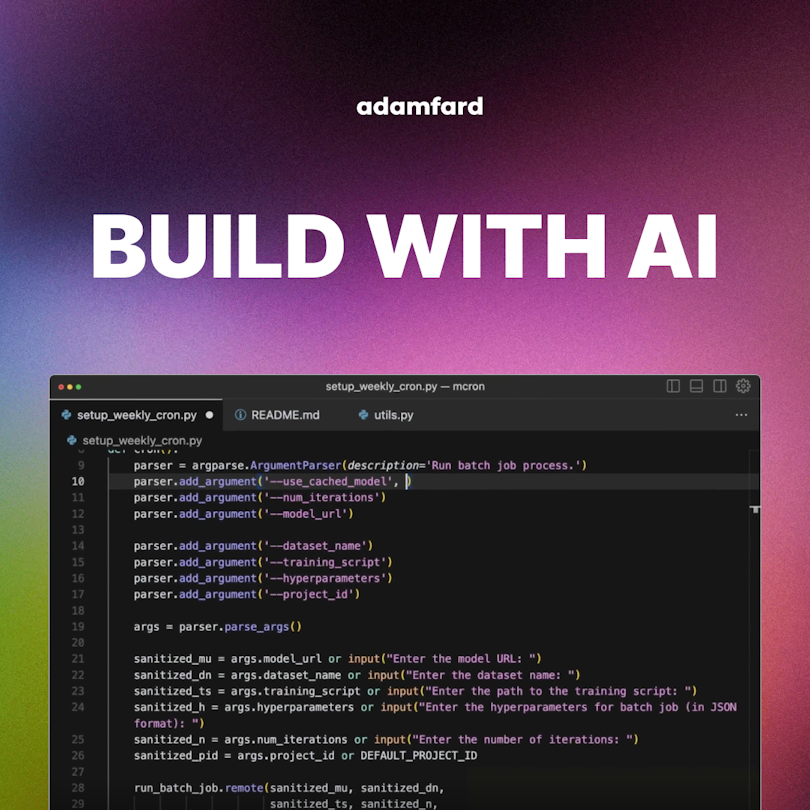
Code & Build Your Startup with AI
The only course you'll ever need to master AI for building products.
Join the WaitlistIntroduction to ChatGPT and Its Capabilities in Coding
ChatGPT, with its advanced language model, is like a skilled artisan in the world of code, capable of understanding and generating programming languages ranging from Python to JavaScript. It's more than just a coding assistant; it's a window into the future where AI collaborates with human intellect to push the boundaries of software development.
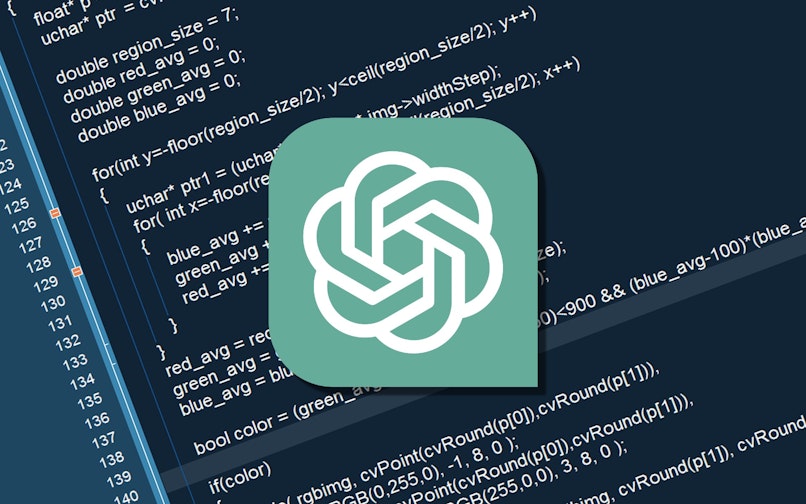
Understanding ChatGPT's Capabilities in Code Writing
Overview of ChatGPT's Proficiency in Various Programming Languages
Imagine a linguist fluent in multiple tongues, each with its unique syntax and nuances. ChatGPT mirrors this linguistic dexterity in the realm of programming languages. Whether it's the structured world of Java or the dynamic landscapes of JavaScript, ChatGPT adapts with ease, understanding and generating code snippets that resonate with the specific character of each language.
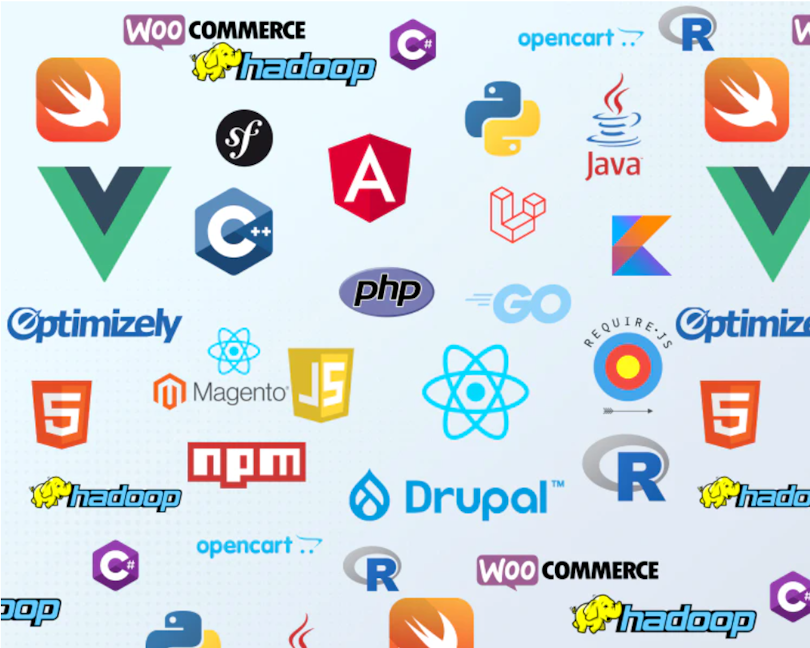
https://www.netsolutions.com/insights/most-popular-programming-languages/
5 Ways ChatGPT Can Assist in Coding
Imagine a digital companion that not only speaks the language of code but also thinks like a programmer. ChatGPT's versatility shines across a spectrum of coding tasks.
Debugging: Think of ChatGPT like a detective who helps you find and fix mistakes in your coding, making it easier and faster.
Prototype and Algorithm Development: Imagine ChatGPT as a creative partner who helps you make the first version of your coding project and suggests smart ways to solve problems.
Educational Tool in Coding: ChatGPT is like a friendly teacher who explains coding easily, helping both students and teachers understand better.
Comprehensive Coding Assistance: ChatGPT is like a helpful assistant who supports you in every step of coding, from starting an idea to making the final touches.
Redefining Coding with ChatGPT: ChatGPT is changing the way we do coding, making it more fun, creative, and easy for everyone, no matter how much they know about coding.
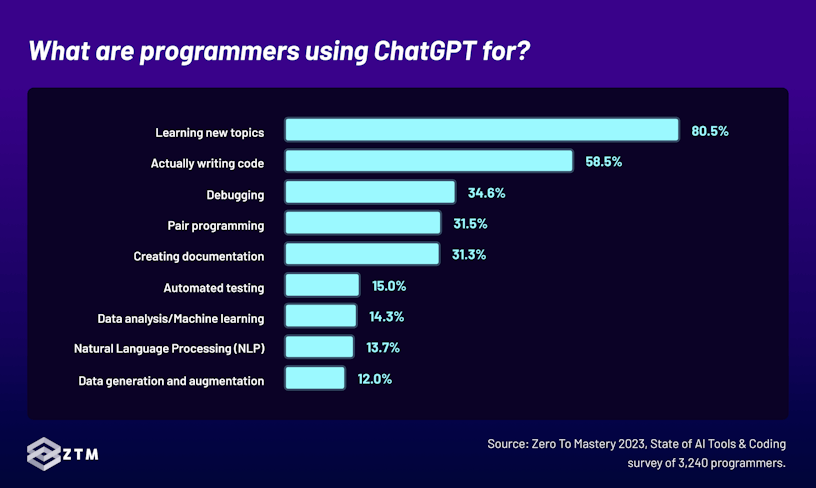
Step-by-Step Guide to Using ChatGPT for Coding
1. Choosing the Right Programming Language
Choosing a programming language is like picking a character in a play – each one has its own special role. Think of Python as a gentle stream – it's easy for beginners to start with and also strong for the experts.
Java is like a big, strong tree. It's really good for building big and important computer programs, especially for businesses. JavaScript is like a quick and flexible gymnast, great for making websites that need to work on the front (what you see) and the back (the behind-the-scenes part).
ChatGPT is like your wise friend who helps you pick the best programming language for your project. It's also great for learning and teaching, making tough coding stuff easier to understand. It even gives advice on how to use AI safely and smartly for coding.
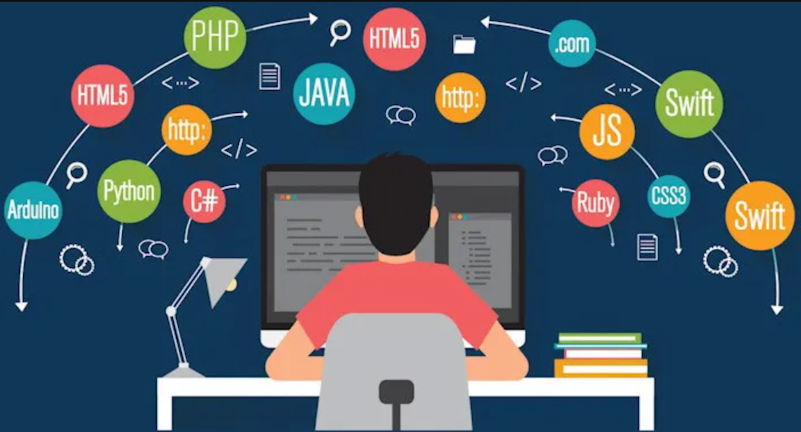
2. Understanding Your Project Requirements
Before delving into code generation, it's vital to clearly define your project's objectives. Are you creating a web application, designing a database, or perhaps automating a routine task? Understanding the scope, functionality, and end goals of your project will help you harness ChatGPT's capabilities more effectively.
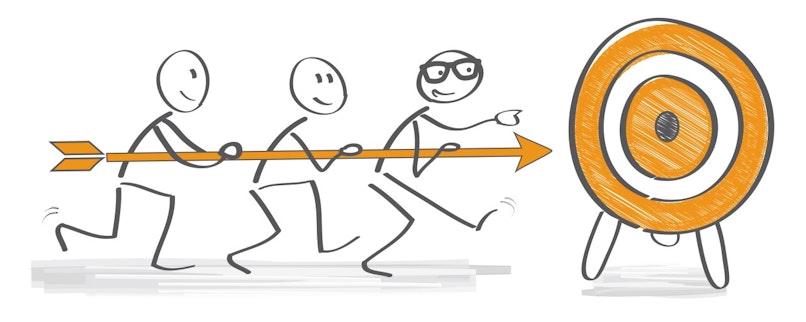
3. Crafting Detailed Prompts for Effective Code Generation
In the realm of ChatGPT, the prompt is your wand, and the details are its magic. Precise prompts lead to more accurate and functional code. For instance, rather than a broad request, specify details such as, "Write a Python function to parse JSON data from an API and output the results in a formatted table." This clarity enables ChatGPT to tailor its code generation to your exact needs.
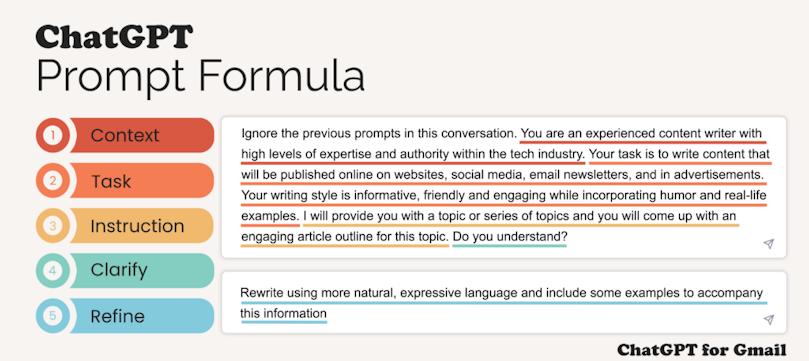
4. Incorporating Specific Requirements and Constraints
Every project has its unique constraints and requirements. It could be coding standards, performance benchmarks, or specific libraries to use. Incorporate these details into your prompts. For example, "Create a Python script using Pandas library to analyze and visualize sales data from an Excel file."

5. Example Scenarios and Code Snippets
Let's explore practical scenarios. Imagine you're building a Python tool for sentiment analysis. Your prompt could be, "Generate a Python script using NLTK to perform sentiment analysis on Twitter data." Or, if you're working on a React-based web application, you might ask, "Provide a React component example for a dynamic user input form with validation.
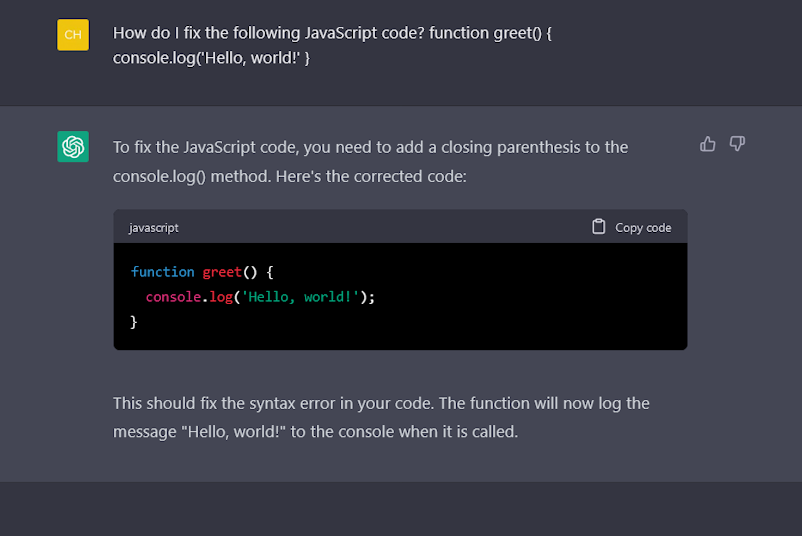
6. Iterating and Refining the Generated Code
The first draft from ChatGPT is a starting point. Review the code, test it, and refine it. If something doesn't work as expected or you need further customization, provide feedback and refine your prompt. For instance, "The Python script for data visualization is great, but can it also include a pie chart representation?"
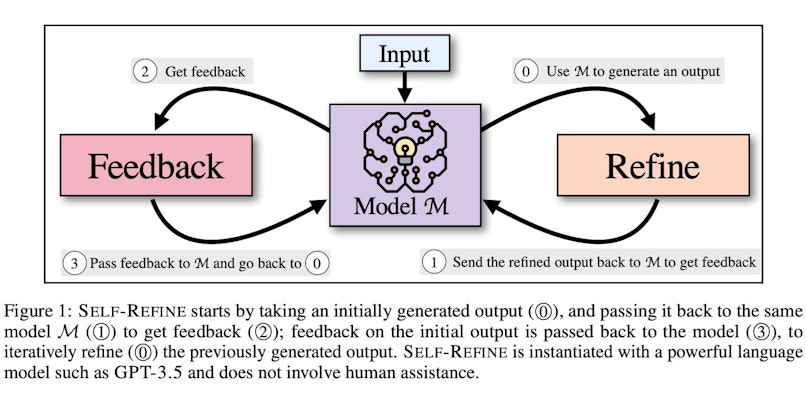
7. Debugging and Troubleshooting
Coding is the art of problem-solving. If the generated code has bugs or errors, use ChatGPT to understand and fix them, employing strategies similar to those in our User Testing Methods. For example, "The JavaScript function for sorting the array throws an error for null values, how can this be fixed?"
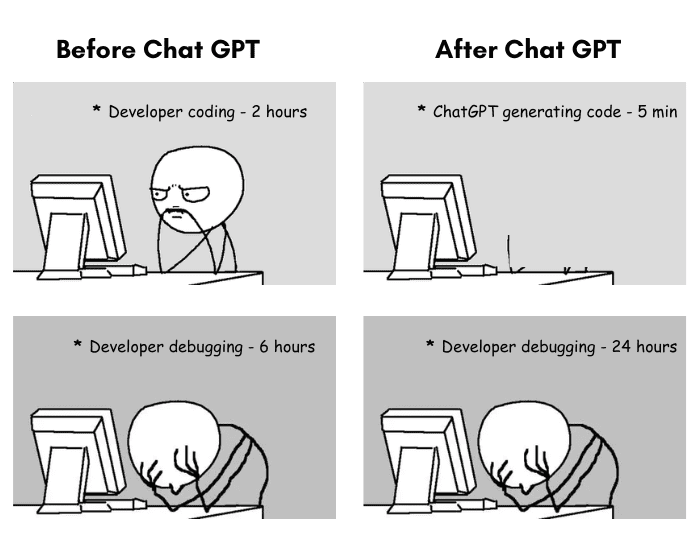
8. Learning and Expanding Your Skills
Use ChatGPT not just as a code generator, but as a learning tool. Ask for explanations on code concepts, best practices, and optimization techniques. For instance, "Explain how the sorting algorithm in the provided JavaScript code works."

9. Applying the Code to Your Project
Finally, integrate the generated code into your project. Ensure it aligns with your overall architecture and meets the project's standards and objectives.
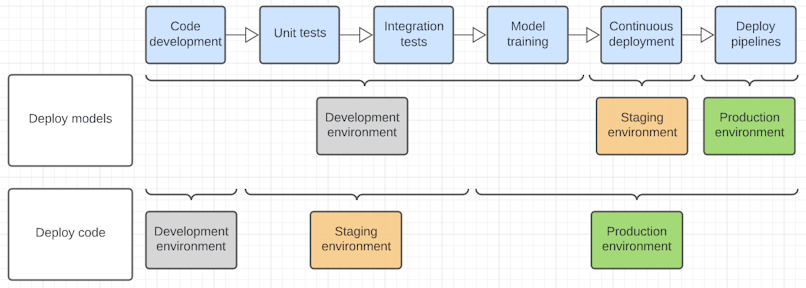
10. Regular Review and Optimization
Always revisit and improve your code. Technology changes fast, so update your code to stay ahead. It's like polishing a gem to keep it shining. Use ChatGPT to learn about new tech and make your project even better.

Crafting Detailed Prompts for Effective Code Generation
Imagine you're a wizard crafting a spell. The effectiveness of your magic depends on the precision of your incantations. Similarly, in the world of ChatGPT, the prompt is your spell. The more detailed and specific your prompt, the better ChatGPT understands your coding needs. For instance, instead of a vague request, a prompt like, "Generate a Python script to scrape data from web pages and store it in a CSV file," leads ChatGPT to conjure the exact code you need.
Example Scenarios and Code Snippets
Let's delve into a few scenarios where ChatGPT's code wizardry shines. Suppose you're working on a data analysis project and need a quick Python script to visualize data. Or, imagine you're developing a web application and require a JavaScript function for user authentication. In each case, ChatGPT can not only provide the initial code but also guide you through customization and optimization, ensuring that the final product is tailored to your specific requirements.

5 Best Practices and Tips for Code Generation with ChatGPT
In the world of coding, imagine yourself as a digital sculptor. You start with a basic block of code provided by ChatGPT, much like a rough stone. Your task is to refine and enhance this code, akin to a sculptor chiseling away to reveal the masterpiece within. Here's a breakdown of this creative process:
Refinement and Iteration: Each adjustment to the code is a careful, deliberate action, shaping it to perfection. This involves not just changing syntax, but infusing the code with life, making it efficient and effective in its purpose.
Optimization for Performance: Go beyond the basic function. Make your code run faster and smoother, ensuring it meets high standards of performance. This step is crucial in transforming ChatGPT's initial output into a polished, professional software piece.
Alignment with Standards: Your code should not only work well but also be easy to read and maintain. Align it with coding best practices, making it a model of clarity and maintainability.
Troubleshooting and Problem Solving: Challenges in coding are inevitable. Use these as opportunities to improve your skills. Test rigorously, understand the code's mechanics, and optimize it. Your analytical skills are key in this phase.
Continuous Optimization: Remember, refining code is an ongoing journey towards excellence. It's about striking the right balance between functionality and finesse.
In this process, ChatGPT is your ally, offering solutions and new perspectives. To deepen your understanding of AI in coding, consider resources like the article ChatGPT for Data Analysis which provides further insights into maximizing AI's potential in coding.
By continually refining and troubleshooting, you don't just enhance your code – you also sharpen your coding expertise and unleash the full capabilities of ChatGPT in code generation.
Real-World Applications and Case Studies
Consider the small startups, where ChatGPT has been a game-changer in streamlining development processes, enabling these budding ventures to punch above their weight in competitive markets.
Educational institutions have also harnessed ChatGPT's capabilities, transforming their teaching methodologies to make programming more accessible and engaging for students. These applications not only highlight ChatGPT's versatility in coding but also underscore its role in democratizing programming knowledge, making it more accessible to a broader audience.

Effectiveness of ChatGPT in Coding Projects (Case Study)
The influence of ChatGPT in coding projects is both profound and diverse. For instance, a tech company leveraged ChatGPT to expedite the prototyping of a mobile application, cutting development time by half and significantly accelerating their go-to-market strategy. This feat exemplifies how ChatGPT can be a catalyst for innovation and efficiency in the tech industry.
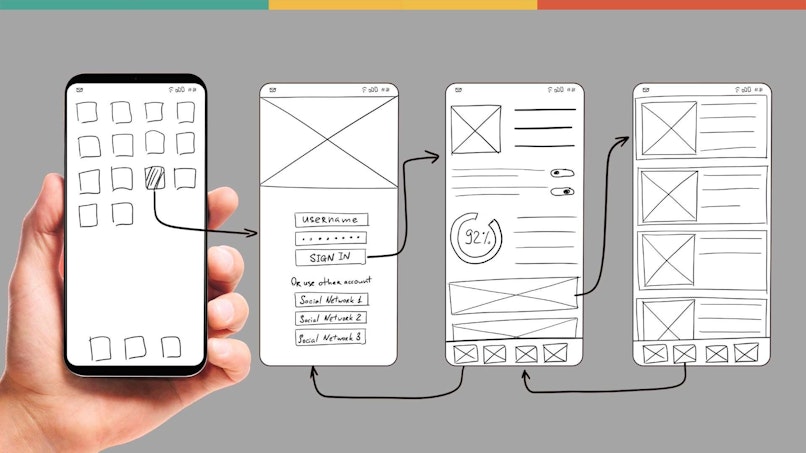
In another inspiring case, a non-profit organization utilized ChatGPT for automating complex data analysis tasks. This application not only streamlined their operations but also freed up valuable resources, allowing them to focus more on their core mission. The organization witnessed a marked improvement in operational efficiency, demonstrating ChatGPT's potential in enhancing productivity across various sectors.
Furthermore, ChatGPT's integration into creative fields like game development and digital content creation has opened new avenues for artistic expression. Developers and creators are using ChatGPT to write scripts and develop interactive narratives, blending the art of storytelling with the precision of coding.
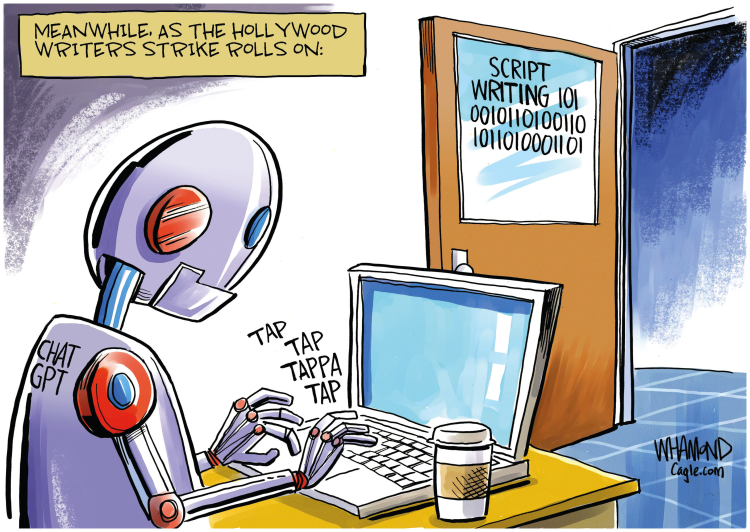
These real-world applications and case studies illuminate the transformative power of ChatGPT in coding projects. From enhancing efficiency in tech companies to empowering non-profits and fueling creative endeavors, ChatGPT stands as a testament to the boundless possibilities of AI in coding. For an in-depth understanding of AI's growing role in professional settings, delve into AI Tools for Recruiting on adamfard.com, which offers comprehensive insights into the evolving landscape of AI tools in the workforce. role not just as a coding assistant, but as a versatile tool that empowers various sectors to innovate and evolve. For an in-depth look at how AI tools are reshaping professional landscapes, [AI Tools for Recruiting] is an excellent resource.
Conclusion and Future of Coding with AI
As we draw the curtains on the topic of AI-assisted coding, it's evident that ChatGPT has not merely altered the coding landscape; it has revolutionized it. Like a digital alchemist turning lines of code into gold, ChatGPT has unveiled a future where programming transcends traditional boundaries, blending creativity, efficiency, and innovation.
The journey with ChatGPT is more than an exercise in code generation; it's a testament to the power of AI in harmonizing with human intellect to forge new frontiers in technology. We stand at the threshold of an era where coding is not just a skill but an art form, where AI serves not as a replacement, but as a collaborator, augmenting the human potential to solve problems and create wonders.
This fusion of AI and human ingenuity heralds a future ripe with possibilities - a future where complex challenges are met with elegant solutions, where the dreams of today become the realities of tomorrow. As we embrace this new dawn of technological symbiosis, let us carry the torch of innovation, guided by the insights and capabilities of tools like ChatGPT.
So, as you step forth from this journey, remember that the path to coding mastery is not a solitary one. With resources like (ChatGPT Mastery) at your fingertips, you are well-equipped to explore this brave new world, where AI is not just a tool, but a companion in your quest to push the boundaries of what is possible in the world of coding.

